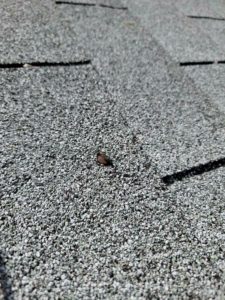5 Most Common Home Inspection Issues
Some of the most common home inspection findings
In this post, we’re going to cover the most common home inspection issues. There is no such thing as a perfect house. I find problems even in new construction homes, but that’s a post for another day. For resale properties, it’s virtually impossible to say that the seller “had to have known” about a problem, unless you can plainly see that an effort was made to conceal it. The truth is that our lives are busy, and most homeowners wouldn’t even know how to spot issues that aren’t obvious to the naked eye. Even homes owned by architects, builders and engineers aren’t going to be completely free of issues. Luckily, the most common home inspection findings often are fairly inexpensive to solve, and can be taken care of before any damage occurs.
1. Loose Toilets
60% of homes I inspect have at least one loose toilet! Homeowners often don’t realize that a loose toilet can lead to damage. In most cases, toilets loosen and start to wobble once the gasket (typically a wax ring) fails. When this happens, water can begin to leak around the base of the toilet. This will eventually lead to odors, as well as significant damage to your floor and subfloor. If loose toilets are among your home inspection findings, you’ll want to address those before damage occurs.
There’s some disagreement among plumbers as to whether or not you should caulk the base of the toilet to the floor. Caulking the base of the toilet all the way around prevents water from seeping out from under the toilet. This leaves homeowners with no way of knowing they have a problem. If you’re going to caulk the base of your toilet, don’t caulk the back. That way, water can still leak from the back to alert you to a problem.


2. Debris in Gutters
Most homeowners are guilty of not cleaning out their gutters as often as they should. You can’t always see the debris in your gutters from the ground. Excessive debris in gutters will prevent the gutters from doing their job. Water will back up into the roof, causing the fascia and roof decking to rot over time. This rot eventually leads to the gutters pulling away from the house. The holes that develop due to rot will allow rodents and other pests to enter the home. The damage in the second photo to the right was the result of clogged gutters over a period of time. Finally, water that spills over the outside edge of the gutter onto the ground can lead to moisture in basements and crawl spaces.


3. Excessive Moisture in Crawl Spaces
Crawl spaces aren’t supposed to be excessively damp, but many of them are. Elevated moisture levels in your crawl space can damage your home in many ways, and most people don’t find out until they have substantial damage to repair. Damp insulation falls, reducing your home’s energy efficiency and increasing your heating and cooling costs. With moisture comes mold, and mold spores will find their way into the home where they can make you sick. Excessive moisture will then cause structural components to rot, leading to costly repairs. There are many possible causes, and the easiest to address are exposed dirt, plumbing leaks, sweating ductwork, and issues with gutters.
Keeping your gutters free of debris isn’t the only way of making sure your gutters aren’t contributing to moisture in your crawl space. Gutters should also be extended away from the foundation, and you should make sure that your gutters are the proper size for the pitch of the roof. Improper grading is the biggest problem you can have contributing to elevated moisture in your crawl space because it is the most expensive to solve, and it often causes larger amounts of water to enter crawl spaces.


4. Minor Electrical Items
While these are not as concerning as the items previously mentioned, it’s a good idea to correct any minor electrical items that your home inspector finds. However, buyers shouldn’t necessarily expect that sellers will cover the cost based on the grounds of safety concerns. For example, a seller who has lived in their home for 30 years with no problems is unlikely to be willing to install GFCI outlets simply because modern safety standards call for them.
One of the most common issues I find is double tapped breakers. This is when multiple conductors are under the set screw of a single breaker. This can lead to overheating and electrical fires if not corrected. Another issue is ungrounded outlets. Many appliances have 3 prong plugs and are intended to be used only with grounded outlets. If one of those appliances is plugged into an outlet with an open ground like the one shown here, there is a danger of shock, electrocution, or damage to the appliance itself.


5. Minor Roof Problems
Minor roof problems still have the potential to turn into bigger problems later. Exposed and underdriven nails are both inexpensive to correct, but both can lead to further damage if you don’t take care of them early. Ideally, you should not be able to see the nails on your roof because they present an opportunity for water intrusion. Exposed nails will corrode over time, and weather conditions can cause the hole to expand over time. Nails become exposed in 2 ways: improper nailing combined with harsh weather conditions, and lazy repairs in which shingles are simply nailed on top of the existing shingles instead of being properly fit under them. Underdriven nails result in loose shingles that are more likely to fly away in strong winds.




